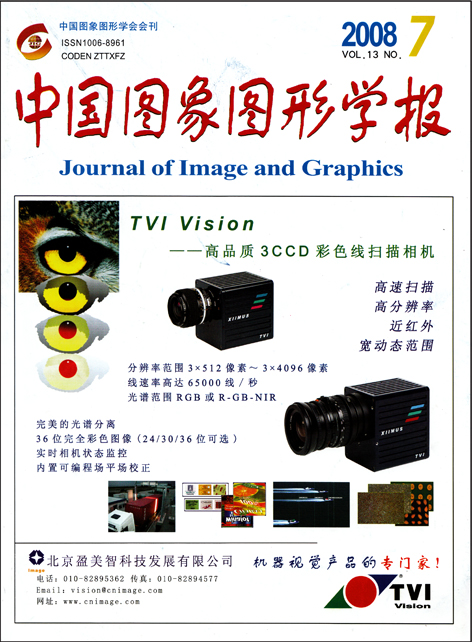|
扫描蛇:一种从高分辨率遥感图像上提取道路的新方法
摘 要
为了能对高分辨率遥感图像上各种复杂情况下的道路进行有效提取,提出了一种称之为“扫描蛇”的半自动新方法。该方法的基本过程是:首先根据用户确定的起始点确定道路的基本走向、路宽、灰度分布等剖面特征;然后在起始剖面两侧进行深度搜索,寻找满足符合条件的道路边缘(梯度极值)点对;最后进行点对连接形成双线道路。在“北京一号”小卫星图像上的实验证明在道路方向、灰度特征分布发生显著改变,道路间断、相互交叉等一系列复杂条件下,该方法均能有效地提取主干道路,体现出较强的鲁棒性和实用价值。
关键词
A Semi-automatic Road Extracting Method for High Spatial Resolution Remotely Sensed Imagery
() Abstract
It is one of the important work to extract linear features, e.g., roads, from remotely sensed imagery in the field of remote sensing information extraction. A semi automatic method to extract roads from high spatial resolution remotely sensed imagery is proposed. The main steps include: 1) some basic profile features, e.g., the starting road direction, width, and radiometry distribution are obtained with the user specified starting road seed couple; 2) a searching fan is then created, within which several ‘scan snakes’ on several directions are dispatched, which contains themselves’ several snake joints, i.e., the scan profiles. Within each scan joint of each snake, a pair of edge points (gradient extremes of the pixel values along each side of the road) which satisfy the road profile model will be searched. For every finding within every joint of a snake, its votes will be added. The best snake is the one which carries the most votes, which then denotes the next searching direction. The searching is carried out from the starting position until reaching some finishing conditions, e.g., the boundary of an image; 3) these edge points are then connected to form a double side road. The main road network can be extracted under a lot of complex conditions, such as distinguishing changes of road directions and radiometry distributions, road broken and intersections. Several experiments on Beijing 1 panchromatic imagery (with spatial resolution 4m) are given, which validate the adaptive ability and practicability of our method.
Keywords
|




 中国图象图形学报 │ 京ICP备05080539号-4 │ 本系统由
中国图象图形学报 │ 京ICP备05080539号-4 │ 本系统由